Itinerary for Rome 3 days
Explore Rome in 3 days
3 days in Rome is the perfect amount of time to see, feel and experience the soul of the Eternal City. But you will need to be prepared to make the most of it! We’ve put together this Itinerary for Rome in 3 days to make sure that you’re in the know, and armed with the insider info that will make your Roman holiday a success! Visiting Rome is not just about cramming in as many monuments and attractions as you can… It’s about living the Dolce Vita. So this itinerary for Rome is the perfect blend of things to do, areas to explore and wining and dining like a Roman. To save you zigzagging around follow our route because we’ve thought out each activity to make sure it is walking distance to the next one. Okay, Andiamo Raggazzi! Or “Let’s go guys” in English!
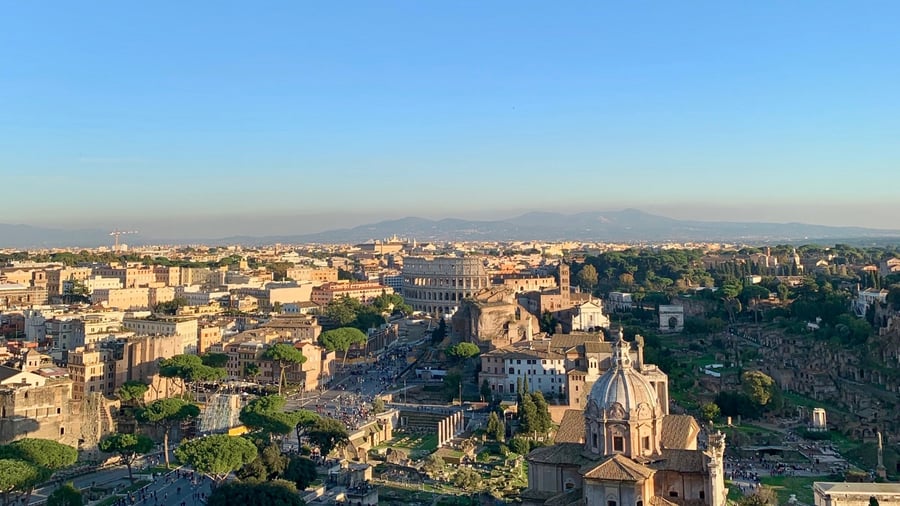
Table of Contents
Day 1 of itinerary for Rome
Day 2 of itinerary for Rome
Day 3 of itinerary for Rome
Day 1 of Itinerary for Rome
The first day of our itinerary for Rome in 3 days is spent in the world of Ancient Rome and one of the trendiest neighbourhoods of the city. Monti. As always when visiting tourist spots in Rome the early bird catches the worm. We know you’re on holiday, but seriously, getting started before 1030am makes a huge difference. Wear some comfy shoes and bring a water bottle because the morning/early afternoon is spent in the archaeological sites of the Colosseum, Palatine Hill and the Roman Forum. It typically takes about 3 hours to visit these three sites. The Afternoon is about the Dolce Vita.
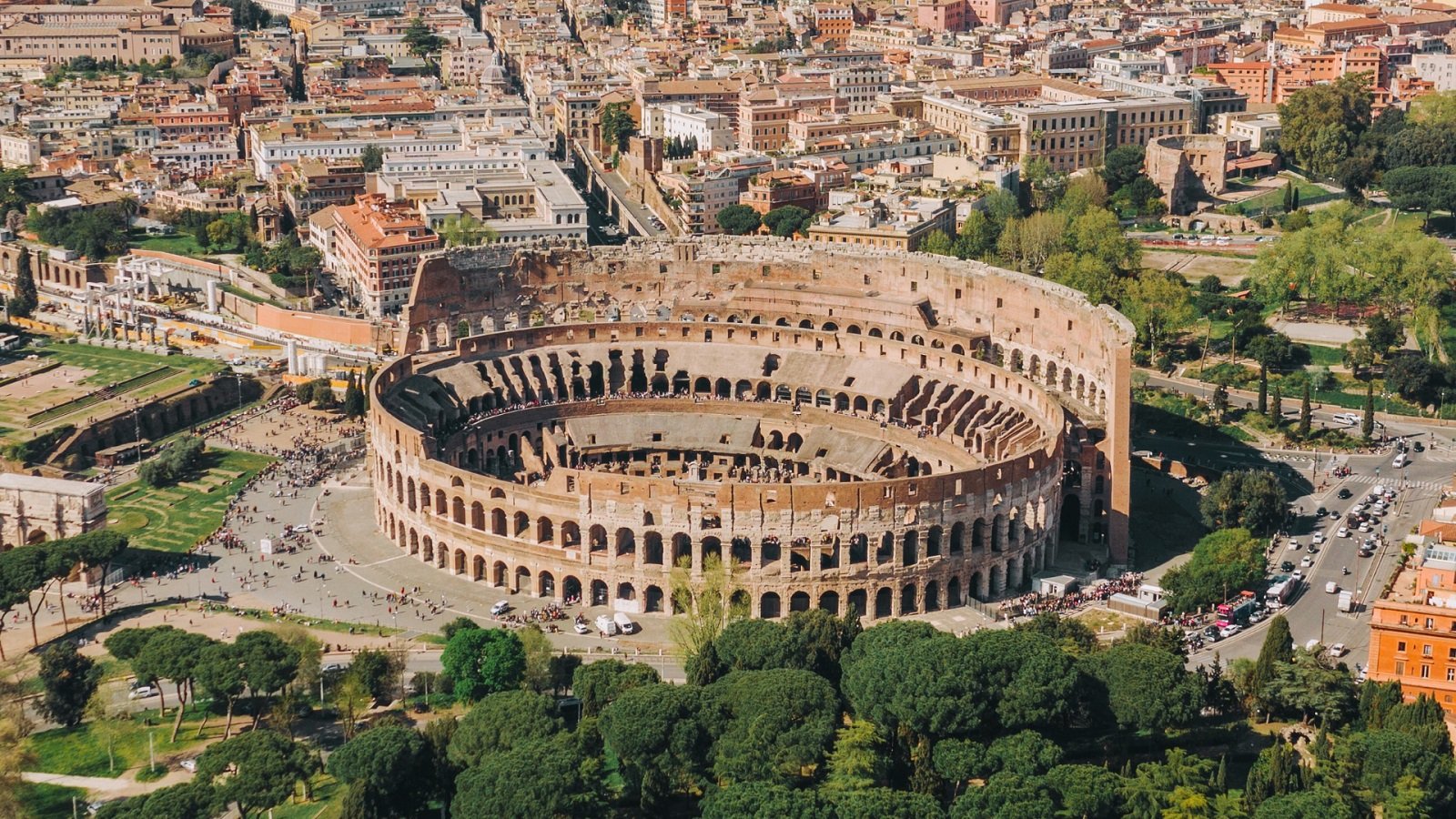
Colosseum
The Colosseum was the pinnacle of the Ancient Roman sport of Gladiatorial Combat. There were over 200 of these arenas in the Roman Empire but in 72CE Emperor Vespasian decided to build the biggest of and best directly at the heart of the Empire. Rome. It took just 8 years to construct! Astonishingly, nearly 2000 years later, about one third of the original structure remains and since the late 20th Century it has been opened to the public. Currently TripAdvisor rate it as the most visited attraction in the world. So make sure you buy your tickets before you get there. Tickets cost 18 Euros, can be bought online, and also include the Palatine Hill and Roman Forum. The Gladiators are undoubtedly one of the most taboo areas of Roman History – but thing’s worked a little differently back then!? It makes for very interesting history. Guided tours of the Colosseum come recommended. Tours of the Colosseum will enhance your experience, skip the line, and help you discover things you can’t read off the signs!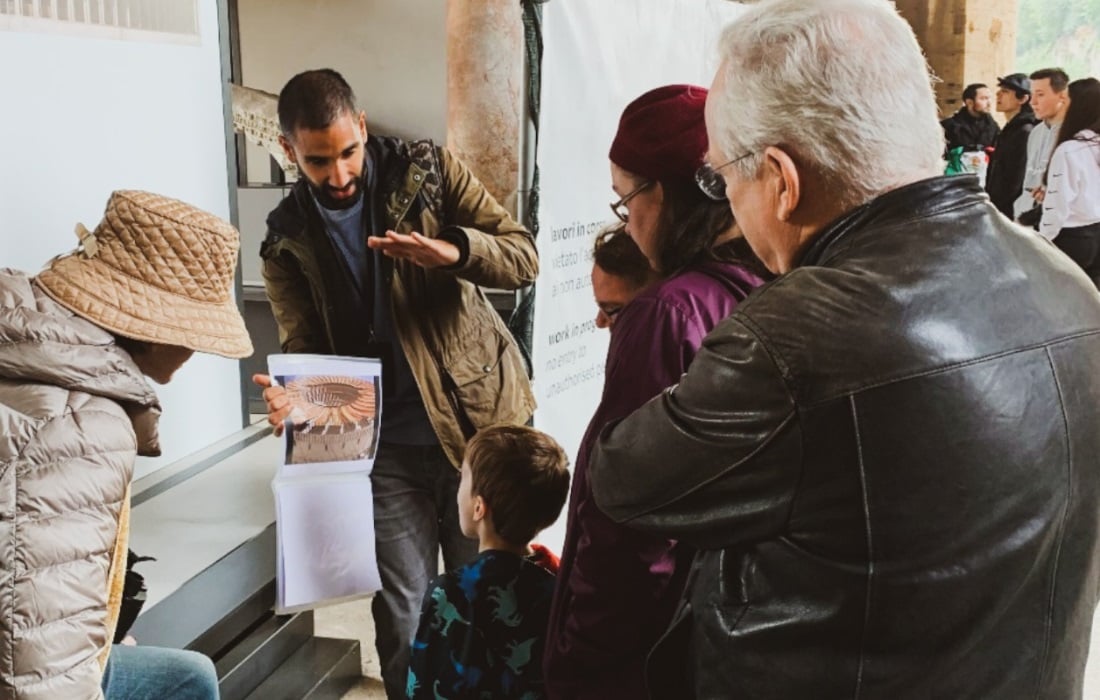
Colosseum Tour by Carpe Diem Rome
The Palatine Hill and Roman Forum
The Palatine Hill and Roman Forum are included in the same ticket that is bought for the Colosseum. Often these places are overlooked. For most the Colosseum is the main attraction. But you should be just as excited for these areas too. The Palatine Hill is scattered with ruins of the palace where the Emperors actually lived. The Roman Forum was downtown ancient Rome – which 2000 years ago was home to over 1 million people! These two archaeological sites are in one very large gated area with three entrances. An insider tip would be to start at the entrance by the Palatine Hill. It’s always better to start with the hill!
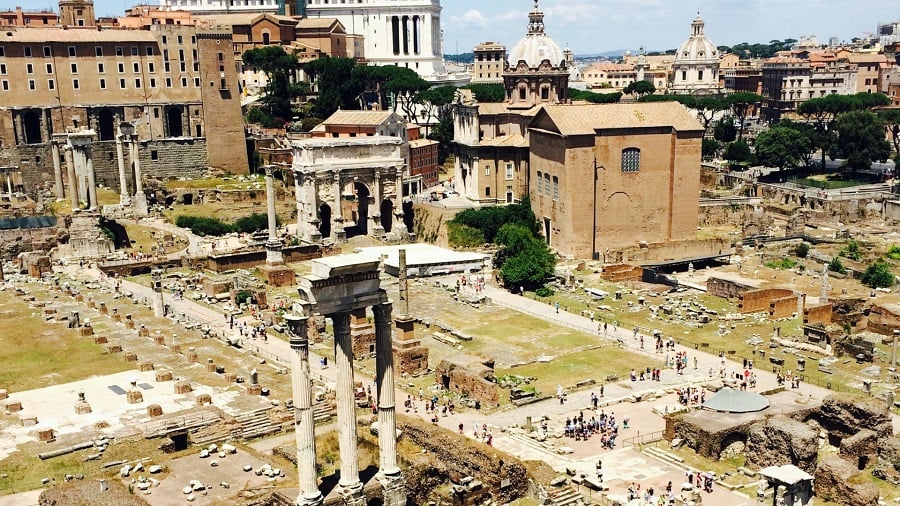
View of the Forum from the Palatine Hill
Palatine Hill
The hill is not just famous for being the place that the Emperors lived. It’s also the birthplace of Rome’s mythical creation by Romulus and Remus. The legend that leave’s its insignia all over the city, even today, and is featured on the emblem of Rome’s football team AS ROMA. Though the legend is disputed, historians and archaeologists agree that this is first hill which the Roman’s occupied and therefore the birthplace of Rome in the 7th Century BCE. That’s seriously old. However little remains from the 7th century BCE. Most of the ruins you can visit on the hill came from the Imperial Period when the Emperors ruled. The massive place complex was built by many emperors and eventually covered the entire hill. It’s been dubbed the Beverly Hills of ancient Rome. In fact Palatine is where the word Palace comes from this. This was the first palace in the world to be called a palace. There are lots of things to discover on the Palatine Hill!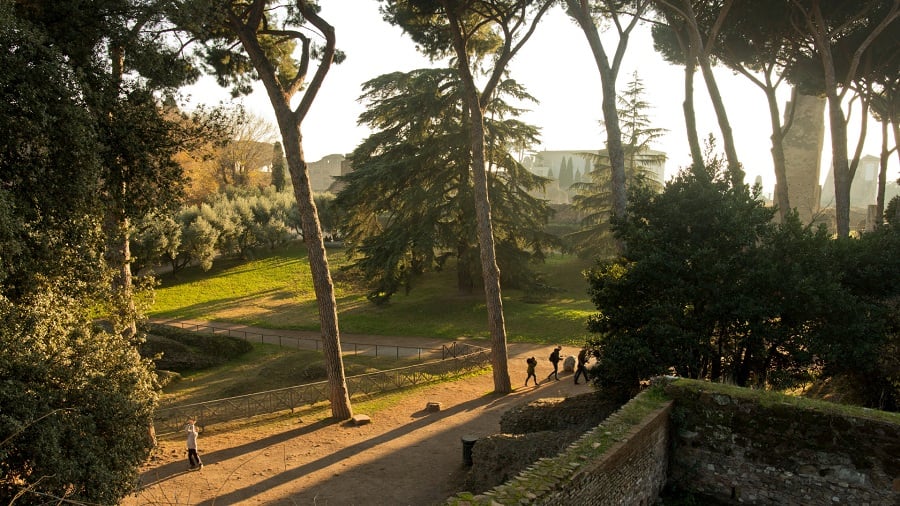
The Lebanese Pines on the Palatine Hill
The Roman Forum
Prepare to be amazed. There is so much to see in the roman forum. You can actually walk down the most important street called the Via Sacra or the Sacred Road – the most important road in ancient Rome! As you do you will pass the almost complete temple of Antonius Pius and Augusta, the temple of Julius Caeser and the house of the Vestal Virgins. Not just that there is the Senate Building, the original roman forum, and the victory arches. That’s only to name a few of the prominent things that can be found in the forum. This is where you will get a feel for what life was really like in the bustling capital of the Roman Empire.
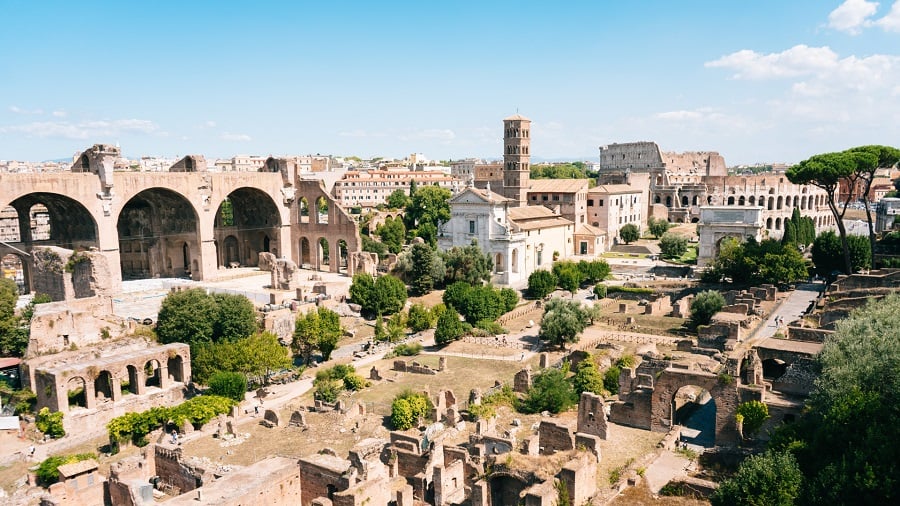
View of Ancient Rome and the Colosseum from the Palatine Hill
Monti
After trekking around Ancient Rome you’ll be in need of some respite – especially if you’ve been under the roman sun. That’s where Monti comes into play. This beautiful little neighbourhood is renowned for its lively and truly Roman atmosphere. It’s just a short walk from the exit of the Roman Forum onto Via Fori Imperiali. The little back alleys are covered with street art and plentiful dwindling making it the perfect place to get some shade, refuel and do some people watching. Make sure to take a stroll down Via della Madonna di Monti, Via Leonina and Via Urbana to really catch the vibe.
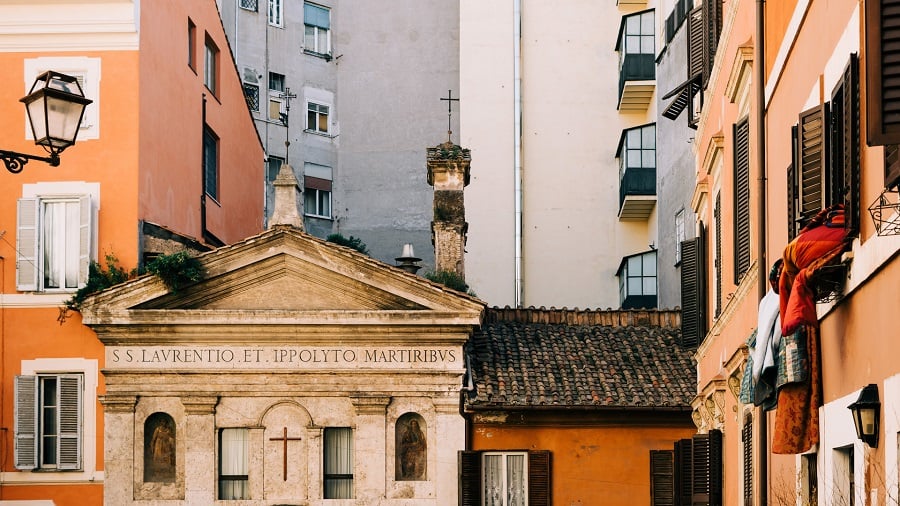
Monti in Rome
Eating
Well when in Rome do as the romans do. Pizza and pasta are the staple food of their diet and it generally comes with less of a price tag than other eats. A favourite for pasta in Monti would be Pasta Chef who will whip you up a bowl of pasta in about 10 minutes. A cool feature of this spot is the open kitchen so you can watch them cook it for you. It’s an experience. A favourite pizza spot would be Trattoria al Tettarello which has a diverse range of pizza’s cooking using the traditional pizza oven. Feeling Quirky? Then try out the Avocado Bar. It’s out of this world.
The Area
Take time to explore all the nooks and crannies of Monti. It’s a fantastic area to shop for souvenirs and offers some of the city’s best artisan and vintage shops. Not to mention the food. And the Gelato. Check out Fatamorgana for some of the best fresh gelato with great vegan options too. Most Romans eat gelato on a daily basis. When in Rome! There is also a church that’s definitely worth a look inside called San Pietro in Vincolo or St. Peters in chains. It was built to hold the relic of the chains that held Peter in Jerusalem but it also houses another really famous Moses by Michelangelo. The statue was designed as a tomb for Pope Julius II and took Michelangelo a staggering 40 years to finish. It’s one of the many exquisite masterpieces you’ll find displayed in Romes churches. 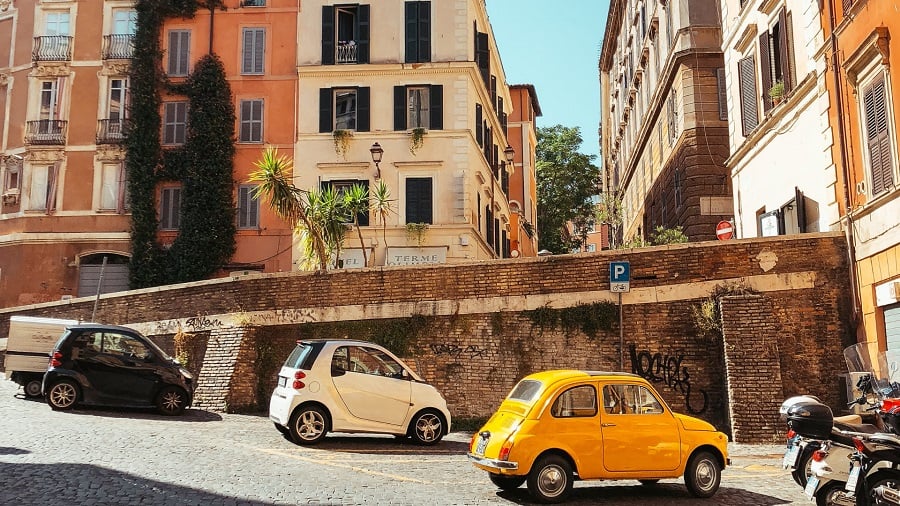
Fiat 500 in Monti
Nightlife
Monti has a heady mix of Irish bars, cocktail bars, and even jazz spots that are perfect for a late night. If you’re looking to have a have a bit of fun with other travellers then try Rome’s Tipsy Tour Bar Crawl. This unique experience is the perfect oppurtunity to check out some bars, socialise with a drink, and get to know the history and culture of Rome.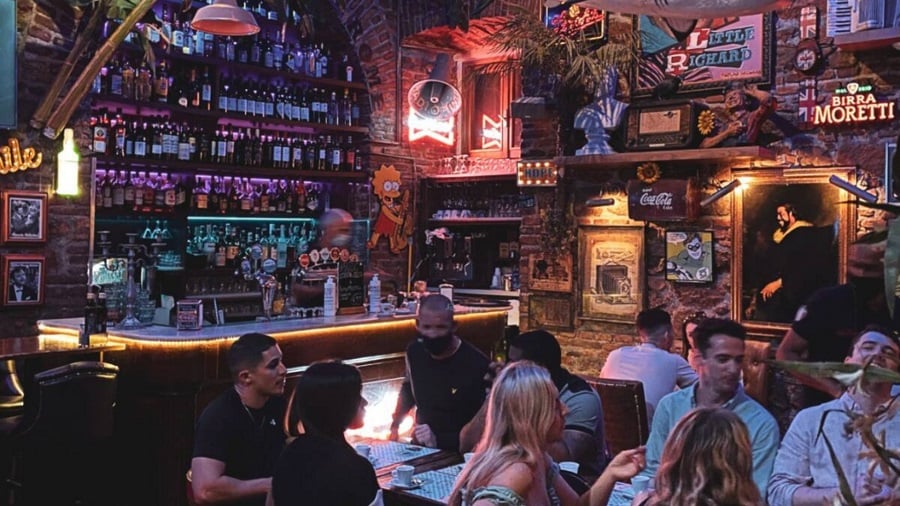
Carpe Diem Rome’s Tipsy Tour
Day 2 of Itinerary for Rome
Day 2 of the 3 day Rome itinerary is packed with sights and requires some walking. Rome is a city that is really best experienced on foot. So we’ve put together a 4 kilometre route that covers all the essentials and will take about 3 hours depending on how long you spend at each place. There is a light at the end of the tunnel as it will finish with gastronomical delights in the medieval old part of town; Trastevere. Bring some coins because on this walking tour of the city you will pass the Trevi Fountain!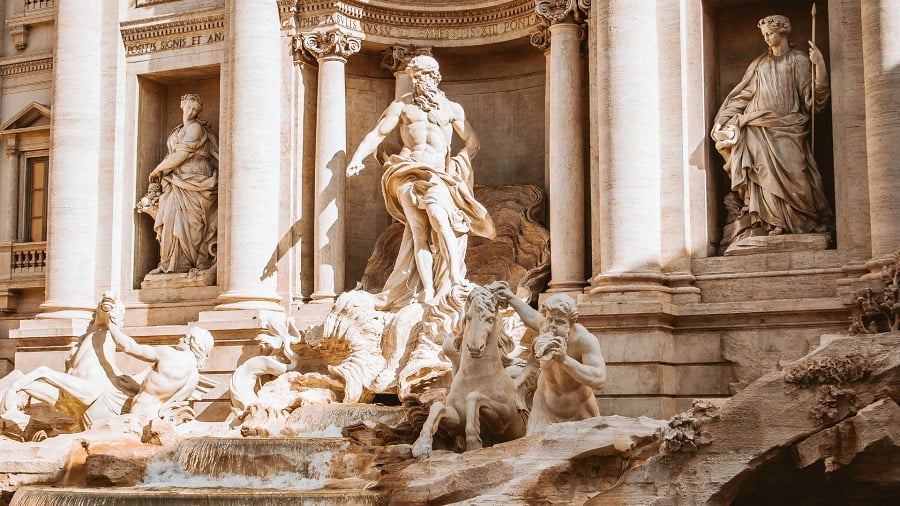
Itinerary for Rome Day 2
Spanish Steps
Probably the famous staircase in the world would be the Spanish Steps. There a few places as majestic or romantic in the world. Since its creation it’s been acclaimed as meeting spot for artists and lovers. Ironically the Spanish Steps were financed by a French Diplomat in the 18th Century. Over the years they have been named the Spanish Steps because of the Spanish Influence in the neighbourhood. At the top of the 138 steps you can observe spectacular views of the city skyline. Near to the base of the steps is an iconic fountain of a boat, called the Barcaccia, which was designed by none other than Bernini – a Baroque sculptor whose work features again in today’s itinerary.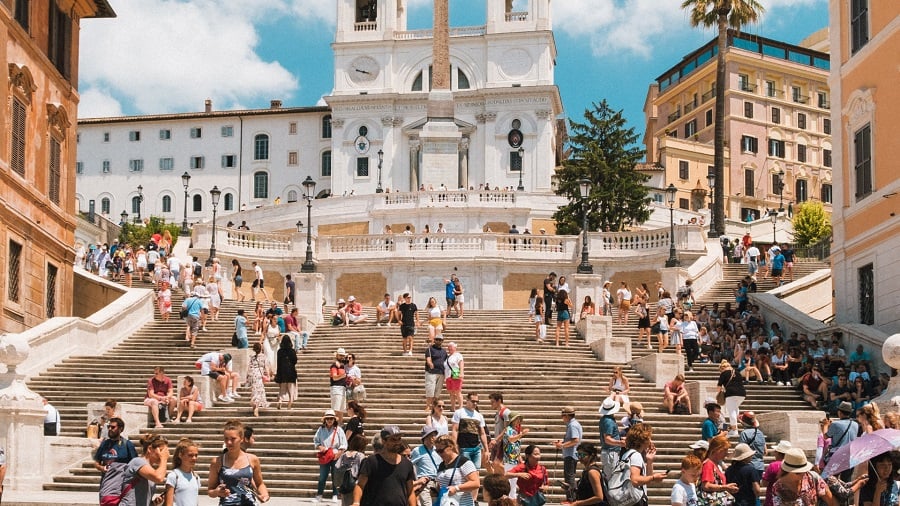
Spanish Steps in Rome
Trevi Fountain
Nestled in a clearing between the narrow streets of Historical center you will find the splendour of the Trevi Fountain. Out of the 2000 bountiful fountains in Rome there are none that compete with the elegance and charm of the Trevi Fountain. A constantly moving masterpiece for all to enjoy that was born in Baroque period. It features a mixture of Christian and Pagan artwork and it pays homage to pioneering roman aqueduct, the aqua vergine, which still supplies the fountain and the neighbourhood with its water today…It’s now 2001 years old! Over time the fountain has attracted an urban legend; the famous coin toss. They say that if you throw in one coin and you will return to Rome, 2 coins and you will return to Rome and fall in love, 3 coins and you will return to Rome to get married. There’s only one way to find out!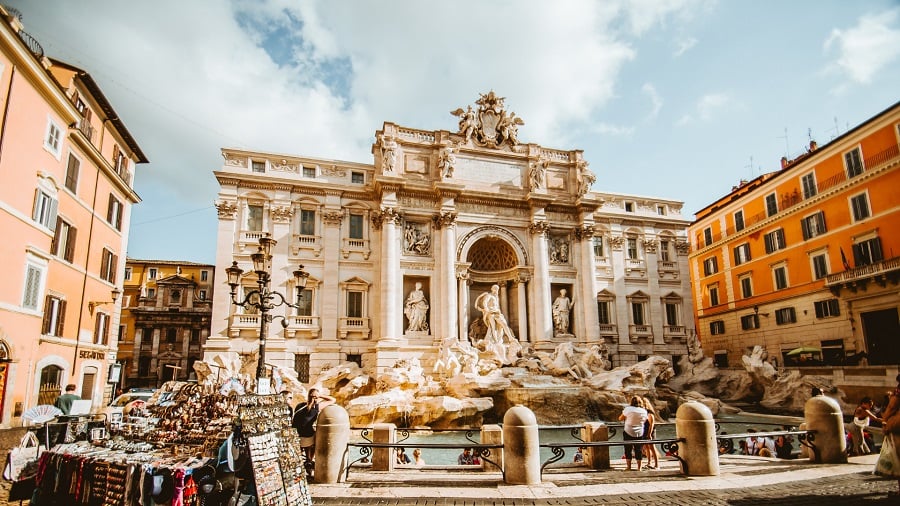
The Trevi Fountain
Piazza Venezia
This is the geographically the most central point in Rome and therefore it is home to a grand piazza, or square in English, which is surrounded by amazing history. It’s extremely important to Rome’s history as it is effectively where the modern city of Rome grew and flourished in the Renaissance. On the outskirts of the square you have Trajan’s Column, Vittorio Emanuele 2nd Monument and Palazzo Venezia.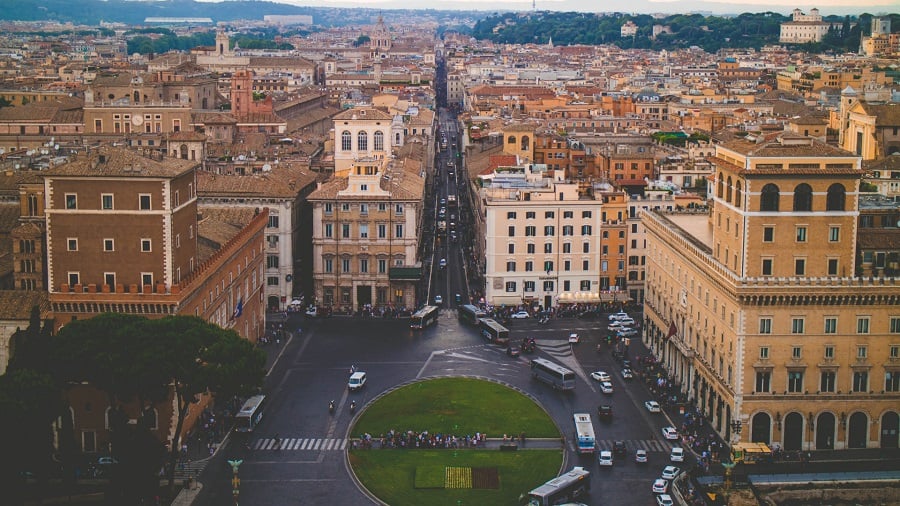
View from Vittorio Emanuele II monument
Trajan’s Column
On the eastern side you’ll find Trajan’s Column. It was built in 107ad and stands 38 metres tall. What makes it so imposing are the 155 scenes of the wars in Dacia. Dacia would be Romania today. A wealthy and strong nation that survived the Roman war machine until the year that Trajan defeated them in 106ad. Experts estimate he took over 100,000 soldiers, the largest army ever used by the Romans, to crush Dacia. Naturally he deserved a great big monument to celebrate it and the level of detail is magnificent. The column feature’s over 2000 figures, mainly soldiers, and it effectively tells the story of the Dacian War. How cool is that!?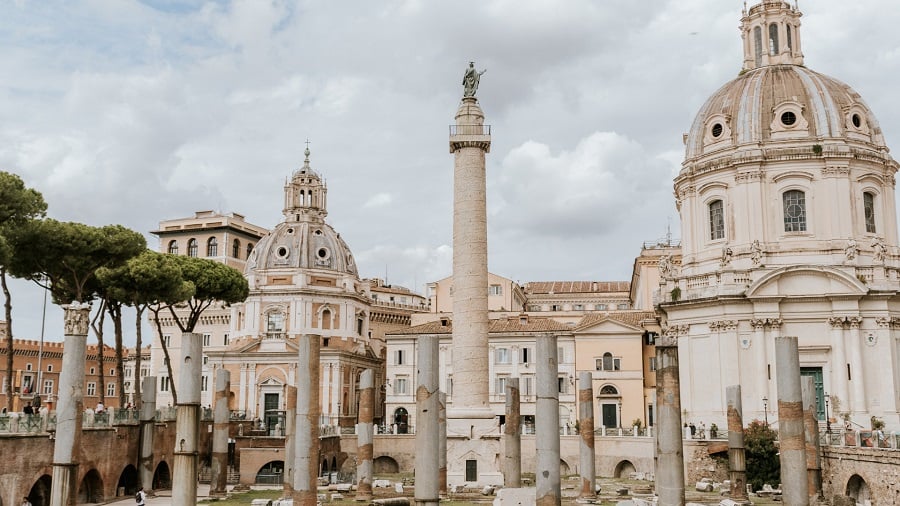
Trajan’s Column next to Piazza Venezia
Vittorio Emanuele II Monument
Also known as the Altare Della Patria this striking building is the tallest in Rome. Built to celebrate the victory of the first king of Italy, Victor Emanuele II, who unified Italy in the late 19th Century. It often comes as a surprise that Italy is such a new country… it’s even newer than America. Prior to that Italy was more or less a bunch of scattered city states owned by warring wealthy families. An insider tip would be to take the elevator on the back of the monument to the top. It’s the highest viewpoint in Rome and you admire views over the whole city. It cost 10 euros for a ticket but it’s worth it. Hit the café with panoramic views over the Roman Forum by the elevator for a little pick me up. The espresso and cappuccino here are delightful.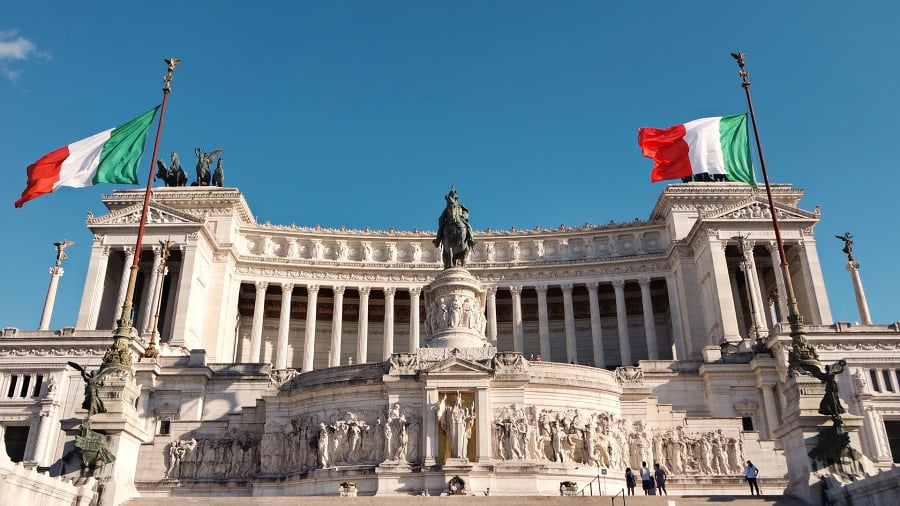
Vittorio Emanuele II Monument
Palazzo Venezia
Palazzo Venezia is the first of building of many that were built in this area of Rome by the Venetians during the Rome’s rebirth. The best part about it is the oasis in the city that lies in the middle. The marvellous courtyard inside has a luscious garden and give’s you the impression there isn’t a city outside. In more recent times the building was used by Mussolini for his headquarters and the balcony which faces onto Piazza Venezia is where he famously declared with Hitler he would go to war with Germany.
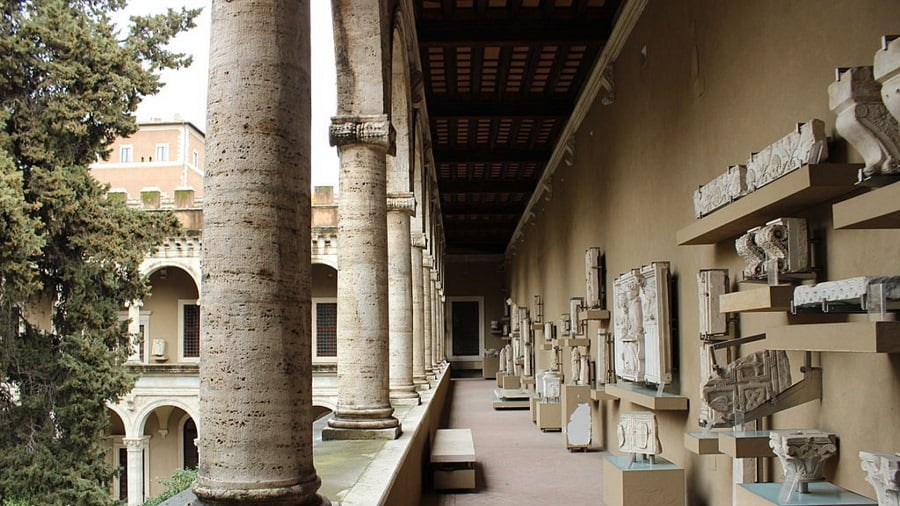
Inside Palazzo Venezia
Pantheon
The most extraordinary of Rome’s ancient building is the Pantheon. There’s actually been three versions of the Pantheon. The one that stands today was constructed around 125AD during the rule of Emperor Hadrian – the fun travelling emperor! It’s about 1900 years old and it still holds the world record for the largest unforced dome in the world. The allure of the Pantheon is mainly due to two of its feature. Firstly, it’s one of the most intact buildings of antiquity in the world. Apart from a few missing statues and things it’s almost exactly the same as it was when it was built. Secondly, there is no centre to the dome. Instead there is a 9 meter hole in the centre which is called the Oculus. When it rains, it rains inside the Pantheon too. Inside the Pantheon you can find two important tombs. One is for Raphael, a pioneer of the Renaissance art, who spent much of his life in Rome. On the other side you can find the tomb of Victor Emanuele II – the king who unified Italy. People still puzzle over its ancient uses – with many believing it was a temple for the all the gods because in Greek the Pantheon means to all of the gods.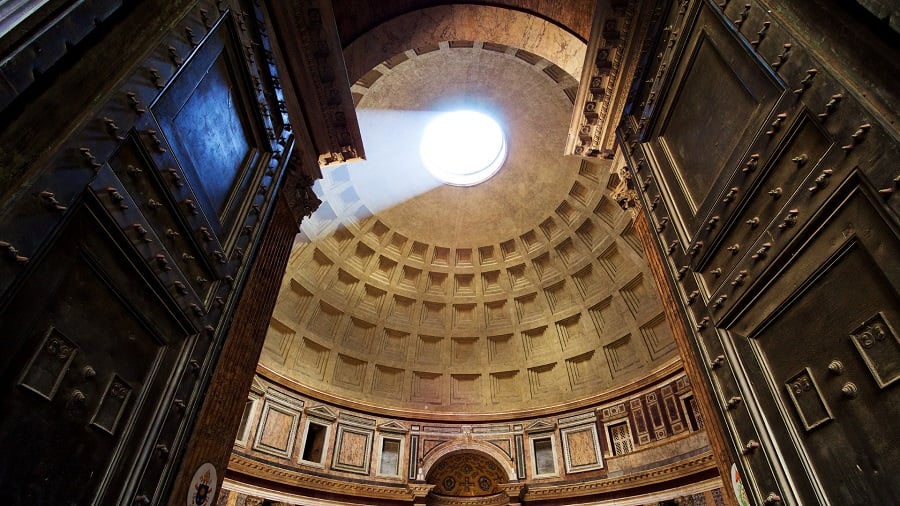
The Oculus in the Pantheon
Piazza Navona
This elaborate piazza has a magical feel to it. The grandeur of the Piazza Navona is a result of the rivalry of the great Baroque artists of Rome. Bernini and Borromini. There are three fountains in the square but the one the draws the most attention is the one in the centre, the fountain of four rivers, next to the church of Sant’Agnese in Agone. Bernini was to thank for the fountain and Borromini for the church. The pieces were commissioned within a few years of each other. The chemistry and history of the artists clearly propelled them to perform out of their skins. Thus we have the enchanting Piazza Navona. A top tip is avoid eating in the restaurants in the square. Just stop for a campari or a spritz. The restaurants look good… but they aren’t the best!
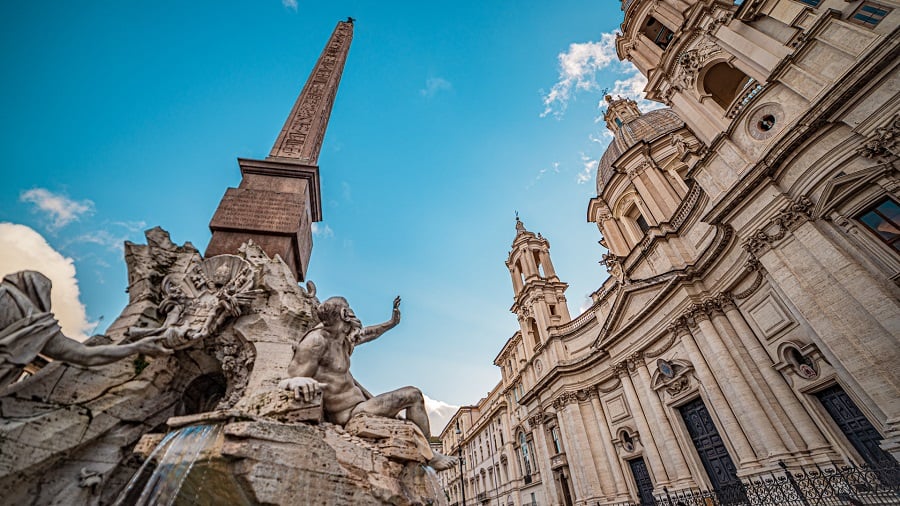
Piazza Navona and the Four Rivers Fountain
Trastevere
What makes Trastevere so special is that its culture stands out from the rest of the city. For sure, every neighbourhood in Rome has its own charisma. Trastevere may very well have the best of them. Similar to Monti, but larger in size, nearly every street you walk on looks like the perfect Roman postcard. Vintage Fiat 500’s can be found all over the place! Today’s Trastevere was built in the medieval times and since then building projects have only been renovations. It’s feels like a place that’s trapped in time and provides the ideal location to the let the day while away. Presented below are a few options of ways to spend your time in Trastevere.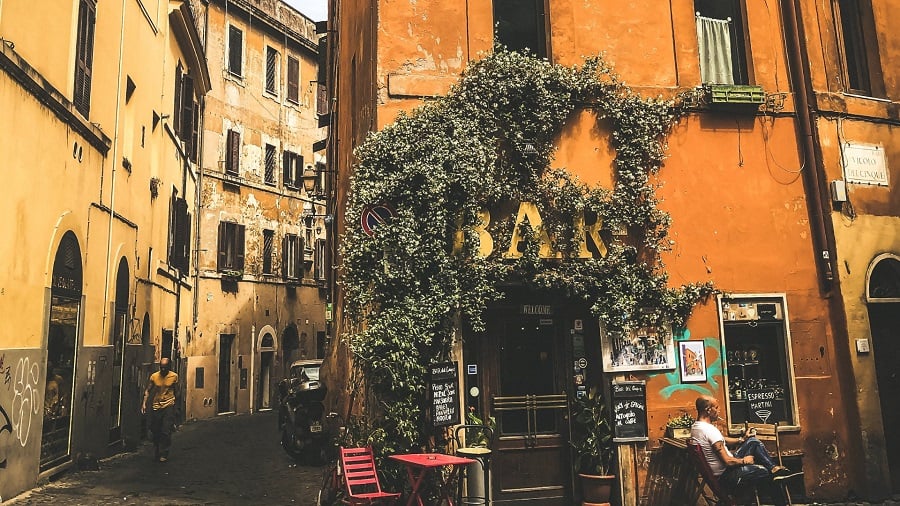
Winding streets of Trastever in Rome
Food & Drink
Trastevere is the kind of place where most of the restaurants, artisan delicacies, and cute little shops have been in the family for ages. Technique and tradition that has been passed down from generation to generation. Serving tasty food isn’t a target for the eateries here, it’s a prerequisite! This area is particularly frequented by Rome Food Tours because of reputation. Food Tour’s are a great way to taste many mouth-watering roman foods and drinks in one afternoon. Food tours also give you the insider access as you will meet the locals who make the food and find out why it’s so delicious. 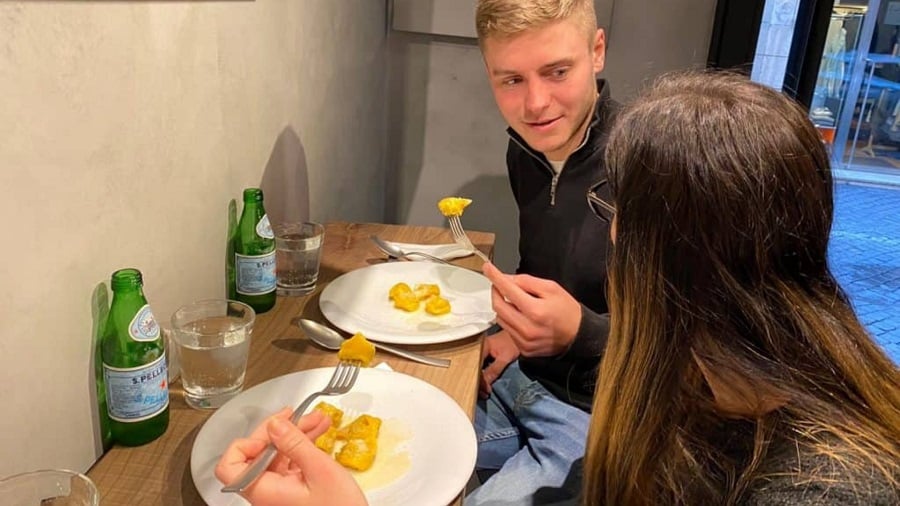
Carpe Diem Rome’s Food Tour
River Tiber
Trastevere literally means across the river in Latin. It’s called this way because the neighbourhood runs up the western side of the river Tiber. If you want to escape Rome’s chaos then take a moment to enjoy the peace and quiet down by the river banks. In the summer a festival, il lungo tevere, takes place in the evenings here. The banks are lined with pop-up bars, restaurant’s, and games stalls with prizes on offer. They even have famous Opera signers perform from boats in river on selected nights. Festivities often go long into the night! In the middle of the river Rome has its very own island. Built to house a hospital originally it’s now popular spot for chill out spots for sunbathing Romans.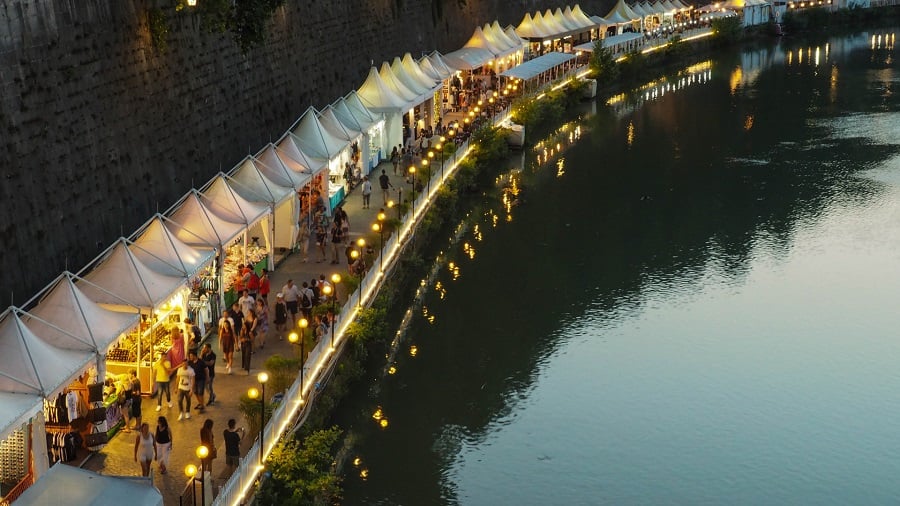
Il Lungo Tevere Festival
Santa Maria in Trastevere
Have you ever been inside an Ancient church? A quick trip to Santa Maria in Trastevere is bound to leave you awestruck. The church has been rebuilt over time but parts are original and date all the way back to middle of the 4th Century BCE. During this time Rome was still ruled by Emperors. Its oldest church on this side of the river that had been built after Constantine changed the official religion from Paganism to Christendom with the edict of Milan in 313CE. Inside you can find lots of the original marbles inscriptions from the church, famous artworks and divine golden mosaics.
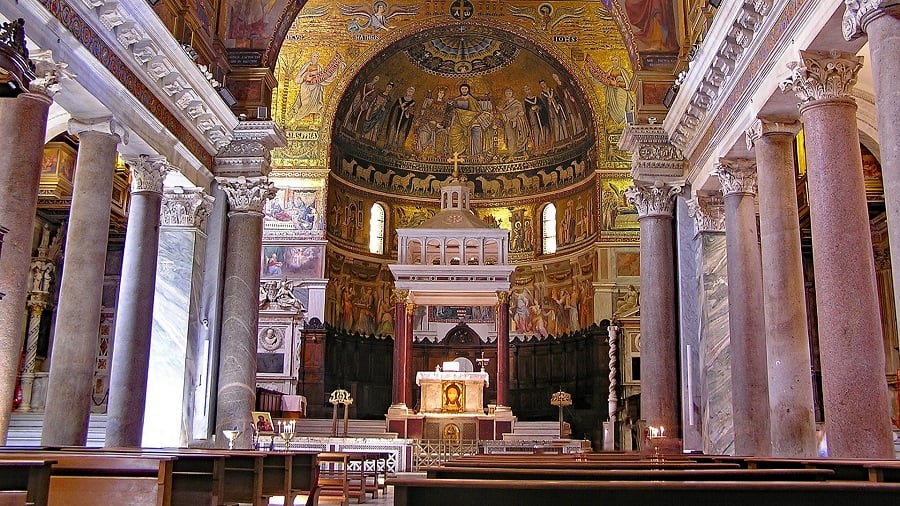
One of the oldest churches in Rome Santa Maria in Trastevere
Day 3 of Itinerary for Rome
Day 3 of our itinerary in Rome begins with a journey to heart of Christendom: Vatican City. Home to one of the world’s most extensive museum collections, the Sistine Chapel, and Saint Peter’s Basillica. We’ve included some top quality lunch options for after. The afternoon is spent visiting the castle in Rome, Castel Sant'Angelo, and enjoying the dazzling gardens of Villa Borghese.
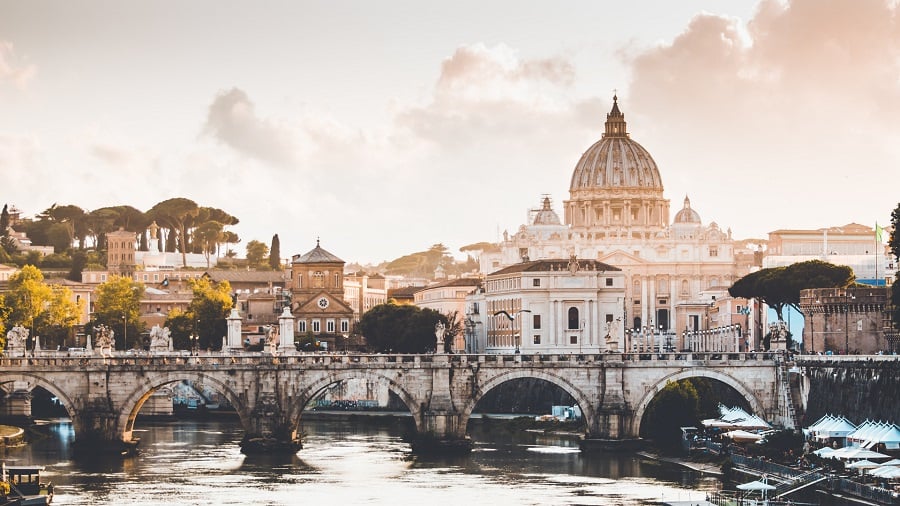
Day 3 of the Rome Itinerary vists Vatican City
Vatican City
The smallest independent nation state in the world is the Vatican City. It is home to the Pope and the seat of the Roman Catholic Church. Visiting the Vatican is truly a one in a lifetime experience. The history behind it and the wonders inside are extremely fascinating. The grandeur of the Vatican is phenomenal. It comes highly recommended to buy tickets in advance of guided tours will of course help you take as much away from your experience as possible! An average visit to the Vatican is about 4 hours. Although you will cross an international border won’t require a passport. However you will need to adhere to the strict dress code; No legs and shoulders on show. Ladies. Jeans or skirts to the knee. Gentleman. Shorts to the knee.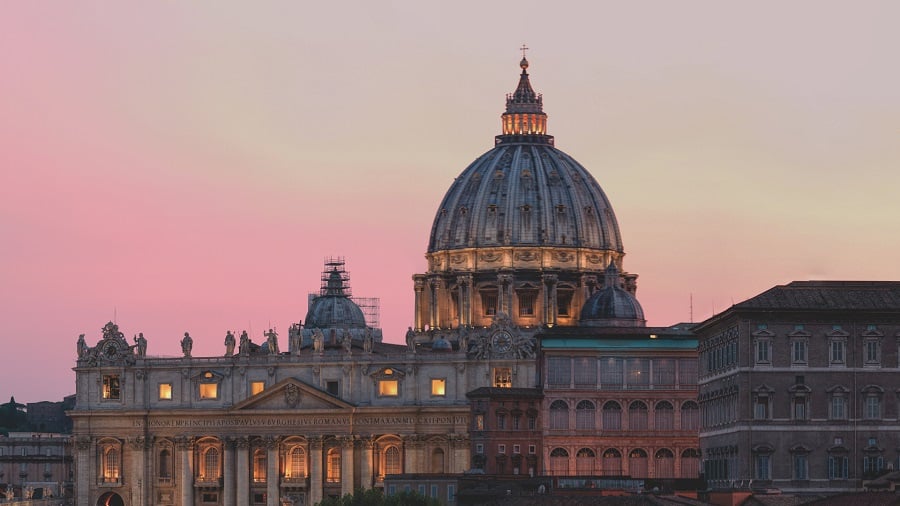
The Dome of the St. Peters
The Vatican Museums
The Vatican Museums consists of over 2000 rooms that display around 70,000 pieces. The amount of human hours that have gone into creating the masterpieces inside is innumerable. Every room has something that will take your breath away but there is very little inside to tell you what everything is. This is where a tour can really pay off. A good guided tour of the Vatican will help you see the best of the museums in about 2 hours… Going it alone can be a little overwhelming… Sometimes it’s best to trust an expert.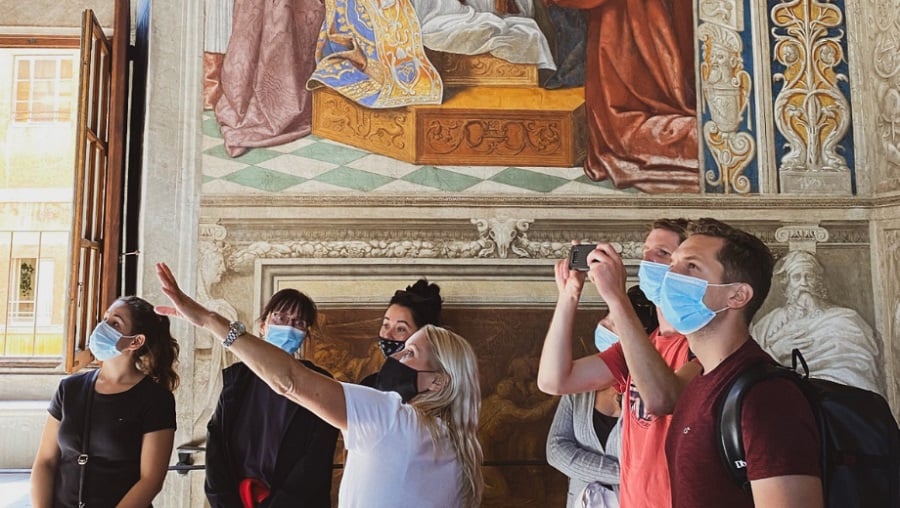
Carpe Diem Rome Vatican Tour
Sistine Chapel
The most famous ceiling in the world would be that of the Sistine Chapel. The ceiling features the masterpiece the Last Judgement by Michelangelo. The story goes that Michelangelo was a sculptor and refused at first to Pope Julius II’s request to paint the ceiling but eventually succumbed. His worry was that if he failed his work would be on show to everyone. He performed a miracle and painted the 2000 square foot ceiling in a matter of just 4 years. 4 years! Today it’s a popular tourist attraction but it still has it uses for the church; including the fabled voting of a new Pope. It’s best to keep quiet inside and resist the urge to take a selfie as you’re not allowed to take photos in the Sistine Chapel.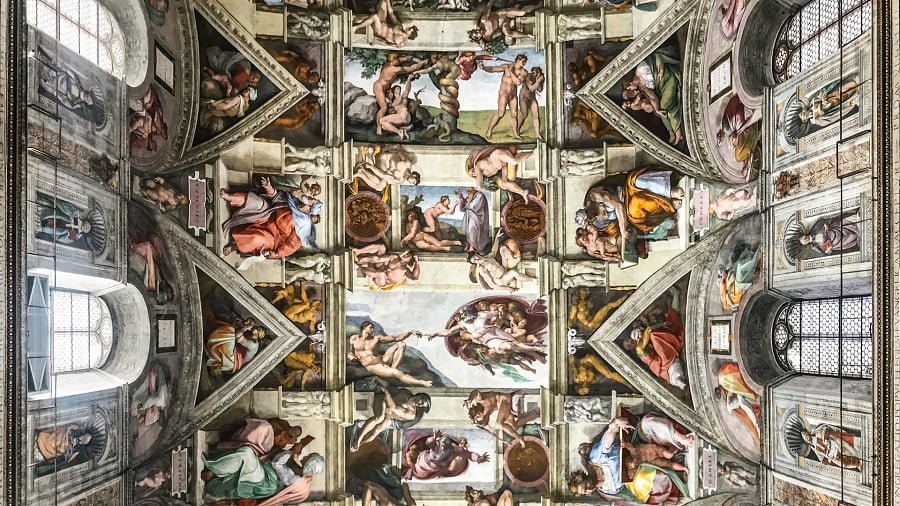
Sistine Chapel in the Vatican City
St Peter’s Basilica
The largest Christian church in the world will leave you lost in wonder. It took over 100 years to actually build it! The main pope’s involved were Pope Julius II and Paul V. Construction began in 1505 and finished in 1615. Amongst the splendour that is to be found inside make sure you take time to find Michelangelo’s Pieta near the entrance and St Peters Baldachin by Bernini which sits over the altar. Near the altar is the entrance to tombs’ of all of the popes, known as the grotto, located underground. For those of you who are feeling adventurous it is possible to climb the Dome of St. Peters for a small fee of 10 euros. The view at the top is sublime and there is a cafeteria on the roof about half way up.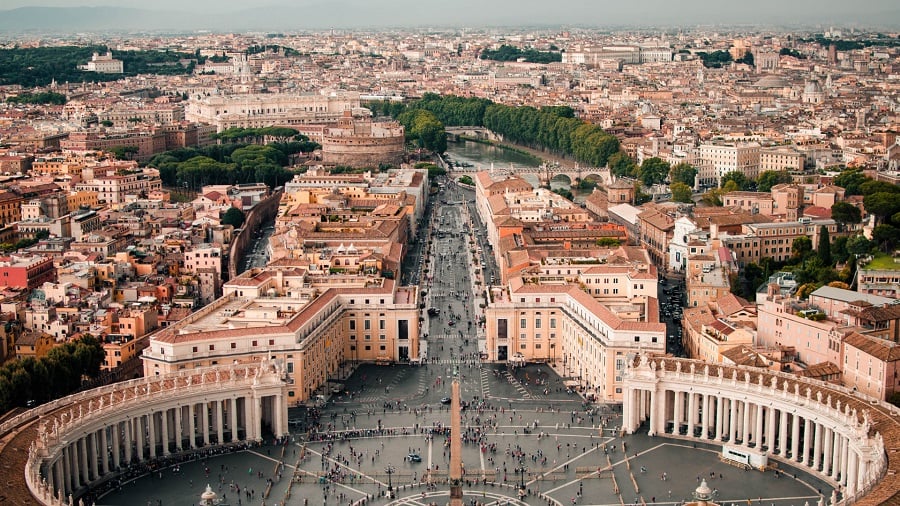
View from St. Peter’s Dome
Restaurants near the Vatican
This is another area of Rome that’s not short of scrumptious eateries. We’ve detailed a two choice local spots. If you’re up from something different then try Del Papa who put enticing Roman twist on the traditional burger. Or stay classic at La Zanzara. Here you can find traditional roman plates that are simply delish!
Juicy Burgers at Del Papa
Castel Sant’Angelo
With all of the other history in Rome it can come as a surprise to people that Rome has a castle complete with a moat. Originally it was not a castle but a Mausoleum built for the Emperor Hadrian at the beginning of the second century CE. Little did he know when he built it that it would have one of the most varied histories of all of Rome’s monuments. Later on modifications were made and the Vatican even built a secret tunnel through a wall there for Pope’s to flee to during times of unrest. This tunnel, passeto di borgo, features in Dan Browns Angels and Demons and now it open to the public. Tickets cost 12 and can be purchased online. It takes about 90 minutes to visit the dungeons, tunnel and various rooms which finish on the balcony which has surreal views over the city. 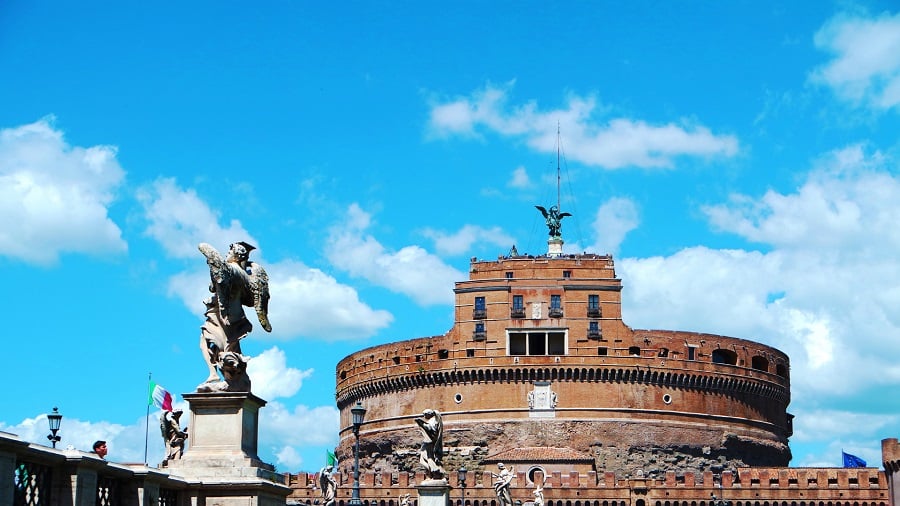
Castel Sant’ Angelo
Gardens of Villa Borghese
To get to the gardens pass through Piazza Del Popolo and climb the stairs to Terazza Pincio. This is one Rome’s most romantic spots and from here you can see all of the city. It’s an ideal spot to catch a sun setting behind the dome of the St Peters. The terrace is adjoined by the gardens that once belonged to the Borghese family they are named after. The ornamental gardens are vibrant and vast… it’s easy to let an evening slip away between the park and terrace. If your still keen to visit another of Rome’s attractions the check out the acclaimed Borghese Gallery. Near the viewpoint there is a refreshments stand so you can take it all in with a drink.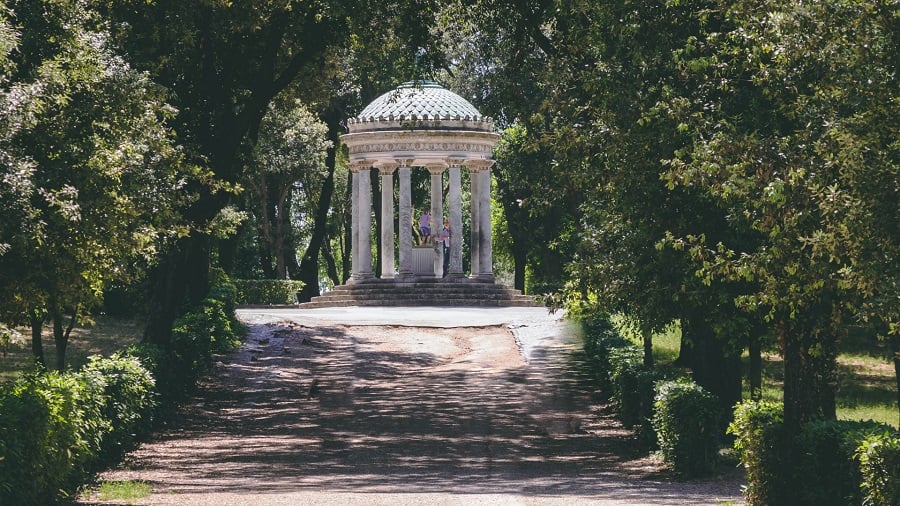
Borghese Gardens in Rome
So that concludes the best 3 day in Rome itinerary. Don’t hesitate to get in touch for any help or advice for your trip to Rome.
Written by Russ from Carpe Diem Rome tours. Russ is a travelling history buff from the UK. He moved to Rome when he was 18 and began studying its diverse history. The rustic alleyways, warm summer nights and incredible food hooked him! He’s now a fully qualified tour guide of Roman history and started Carpe Diem Rome tours in 2018.
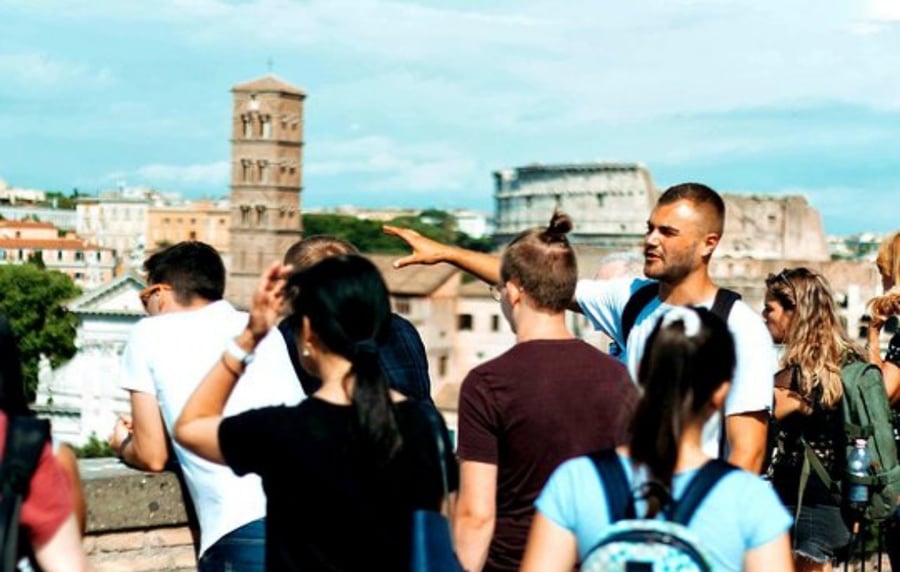
SUBSCRIBE TO OUR NEWSLETTER
Travel ideas & local insights that will keep you always up to date.
copyright © 2020 travel12 | traveling experiences all rights reserved
- terms and conditions
- privacy policy
-
ministry of tourism licence number: 0206E60000594201


